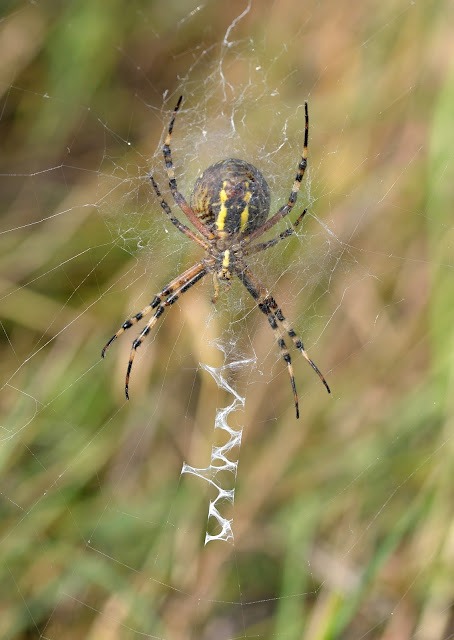With the Long-tailed Blues still not emerging in quantities yet, perhaps struggling in the steady cool breeze that seems to be haunting the South coast this year it was a short trip up Seaford Head to see how the Small Coppers were faring this autumn. The answer was not as good as last year with only 4 seen. However, all was not lost as there were a couple of other delights including a superb Fox Moth larvae. This species is often seen in the autumn in its larvae form, but rarely seen as an adult moth. I have yet to see one properly. As ever the larvae was on the ground amongst the grass, but was coaxed off the ground to show it off better.
Fox Moth Larva.
After this I went to check out Harry's Bush to see if any migrant birds were around. Apart from a few Chiff Chaffs there was very little. Walking along the Gorse bushes though I hit lucky when I saw a Meadow Pipit take off from the ground and land on the far side of the bush. A couple of steps further I saw there was a small gap in the bush and I had a clear view of the bird, and the bird did not appear to see me so I was able to get a few shots off. The bush around the gap also gave a really nice softened surround which helped to show the bird off just as I was hoping.
Meadow Pipit.





















































